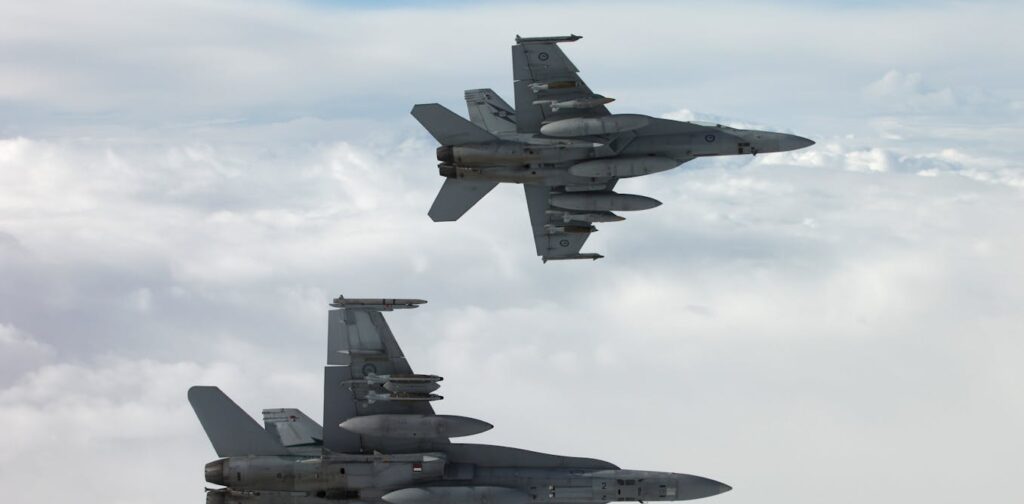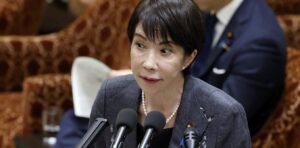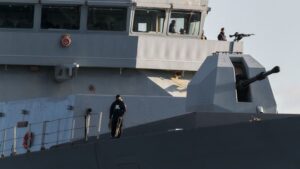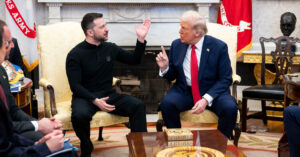
After significant lobbying by former US President Donald Trump, NATO leaders have committed to increasing annual defense spending to 5% of their countries’ gross domestic product (GDP) by 2035. This ambitious target was announced in a NATO statement released this week, emphasizing unity against profound security threats, particularly from Russia and persistent terrorism.
The statement declared,
“United in the face of profound security threats and challenges, in particular the long-term threat posed by Russia to Euro-Atlantic security and the persistent threat of terrorism, allies commit to invest 5% of GDP annually on core defense requirements as well as defense-and security-related spending by 2035.”
This development arrives at a challenging time for Australia’s Albanese government, which has so far resisted increasing its defense spending beyond the current levels of around 2% of GDP, or nearly A$59 billion per year. This figure is projected to reach 2.33% by 2033–34. However, Trump has called for Australia to raise this to about 3.5%, and with NATO’s new agreement, the pressure is mounting for Australia to reconsider its defense budget.
Pressure from Trump and Global Security Concerns
Trump, a long-time critic of NATO, has frequently criticized the alliance’s readiness and spending levels. Meanwhile, Russia’s ongoing conflict in Ukraine and suspected sabotage activities across Europe have heightened concerns about allied preparedness. Against this backdrop, the NATO summit saw Trump reaffirm the US’s commitment to the alliance, prompting European members to pledge increased defense spending.
The NATO agreement is more nuanced than headlines suggest. It breaks down the 5% GDP commitment into two parts: 3.5% for traditional defense spending, including ships, tanks, and personnel, and 1.5% for protecting critical infrastructure, defending networks, and enhancing civil preparedness and resilience. This approach reflects a direct response to threats from Russia and serves as an insurance policy against doubts regarding US reliability in the alliance.
However, not all NATO countries are on board with the new spending targets. Spain and Belgium, for instance, have yet to meet the previous 2014 commitment to spend 2% of GDP on defense, highlighting internal challenges within the alliance.
Implications for Australia
The commitment to increase NATO defense spending indirectly impacts Australia’s ongoing debate over its defense budget. The US, as Australia’s main strategic ally, has been urging Australia to raise its defense spending to 3.5% of GDP. This push aligns with US Defense Secretary Pete Hegseth’s recent call for Asian allies to increase their defense budgets, citing Europe as a model.
Australia is not alone in facing this pressure; Japan is also being encouraged to boost its defense spending. The NATO announcement is likely to embolden the US to apply further pressure on Australia, potentially leading to a more challenging relationship with its most crucial ally.
Australia’s Strategic Dilemma
Prime Minister Anthony Albanese has stated that Australia will determine its own defense spending levels, arguing that arbitrary GDP limits are unhelpful. He emphasizes that defense spending should be based on capability needs rather than external demands.
Despite this stance, allies have legitimate expectations that all parties in an alliance will contribute their fair share. Currently, Australia’s defense capabilities do not fully align with its strategic needs, leaving gaps in areas such as naval capabilities, mine warfare, and infrastructure protection against missile attacks.
These gaps pose significant risks, especially given the current strategic environment, which some experts consider the most challenging since World War II. In the event of a major regional crisis, Australia may struggle to defend itself for an extended period without substantial reforms and investment in defense.
Looking Forward
In response to NATO’s announcement, Australian Defence Minister Richard Marles stated,
“We have gone about the business of not chasing a number, but thinking about what is our capability need, and then resourcing it.”
During the election campaign, both the Prime Minister and Defence Minister left open the possibility of increasing defense spending, though the timeline and impact on Australia’s relationship with the US remain uncertain.
The road ahead for Australia involves balancing its defense needs with alliance commitments, all while navigating a complex geopolitical landscape. As global security dynamics continue to evolve, Australia will need to carefully consider its defense strategy and spending priorities to ensure it remains a capable and reliable partner on the international stage.





